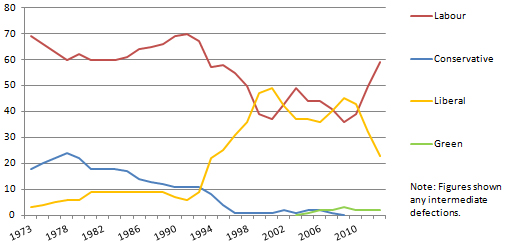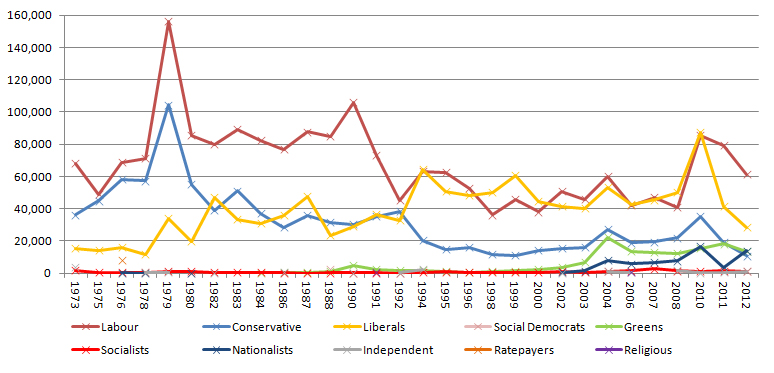Sheffield City Council elections on:
[Wikipedia]
[Google]
[Amazon]
Sheffield City Council elections usually take place by thirds, three years out of every four.
 From 1889 to 1974
From 1889 to 1974


File:1967 Sheffield City Council election map-en.png, 1967 results map
File:1968 Sheffield City Council election map-en.png, 1968 results map
File:1970 Sheffield City Council election map-en.png, 1970 results map
File:1971 Sheffield City Council election map-en.png, 1971 results map
File:1972 Sheffield City Council election map-en.png, 1972 results map
File:Sheffield UK local election 1980 map.png, 1980 results map
File:Sheffield UK local election 1982 map.png, 1982 results map
File:Sheffield UK local election 1983 map.png, 1983 results map
File:Sheffield UK local election 1984 map.png, 1984 results map
File:Sheffield UK local election 1986 map.png, 1986 results map
File:Sheffield UK local election 1987 map.png, 1987 results map
File:Sheffield UK local election 1988 map.png, 1988 results map
File:Sheffield UK local election 1990 map.png, 1990 results map
File:Sheffield UK local election 1991 map.png, 1991 results map
File:Sheffield UK local election 1992 map.png, 1992 results map
File:Sheffield UK local election 1994 map.png, 1994 results map
File:Sheffield UK local election 1995 map.png, 1995 results map
File:Sheffield UK local election 1996 map.png, 1996 results map
File:Sheffield UK local election 1998 map.png, 1998 results map
File:Sheffield UK local election 1999 map.png, 1999 results map
File:Sheffield UK local election 2000 map.png, 2000 results map
File:Sheffield UK local election 2002 map.png, 2002 results map
File:Sheffield UK local election 2003 map.png, 2003 results map
File:Sheffield UK local election 2004 map.svg, 2004 results map
File:Sheffield UK local election 2006 map.svg, 2006 results map
File:Sheffield UK local election 2007 map.svg, 2007 results map
File:Sheffield UK local election 2008 map.svg, 2008 results map
File:Sheffield UK local election 2010 map.svg, 2010 results map
File:Sheffield UK local election 2011 map.svg, 2011 results map
File:Sheffield local election map 2012.gif, 2012 results map
File:Sheffield local election map 2014.gif, 2014 results map
File:Sheffield local election map 2015.gif, 2015 results map
File:Sheffield local election map 2016.gif, 2016 results map
File:Sheffield City Council election, 2018.svg, 2018 results map
File:Sheffield City Council election, 2019.svg, 2019 results map
File:Sheffield City Council election, 2021.svg, 2021 results map
File:2022 Sheffield City Council election.svg, 2022 results map
Sheffield City CouncilMembers of Sheffield City Council 1974–present
{{Metropolitan districts of England Politics of Sheffield Council elections in South Yorkshire Local government in Sheffield
Sheffield City Council
Sheffield City Council is the city council for the metropolitan borough of Sheffield in South Yorkshire, England. It consists of 84 councillors, elected to represent 28 wards, each with three councillors. It is currently under No Overall Con ...
is the local authority for the metropolitan borough of Sheffield
Sheffield is a city in South Yorkshire, England, whose name derives from the River Sheaf which runs through it. The city serves as the administrative centre of the City of Sheffield. It is historically part of the West Riding of Yorkshire a ...
in South Yorkshire
South Yorkshire is a ceremonial county, ceremonial and metropolitan county, metropolitan county in the Yorkshire and Humber Region of England. The county has four council areas which are the cities of City of Doncaster, Doncaster and City of Sh ...
, England. Each of Sheffield's 28 wards is represented by three positions on the council, meaning there are usually 28 seats contested in each local election. 1967, 1973, 2004 and 2016 saw new ward boundaries and therefore all seats were contested.
Political control
 From 1889 to 1974
From 1889 to 1974 Sheffield
Sheffield is a city in South Yorkshire, England, whose name derives from the River Sheaf which runs through it. The city serves as the administrative centre of the City of Sheffield. It is historically part of the West Riding of Yorkshire a ...
was a county borough
County borough is a term introduced in 1889 in the United Kingdom of Great Britain and Ireland, to refer to a borough or a city independent of county council control, similar to the unitary authorities created since the 1990s. An equivalent te ...
, independent of any county council. Under the Local Government Act 1972 it had its territory enlarged and became a metropolitan borough, with South Yorkshire County Council
The South Yorkshire County Council (SYCC) — also known as South Yorkshire Metropolitan County Council — was the top-tier local government authority for the metropolitan county of South Yorkshire from 1 April 1974 to 31 March 1986. A strategic ...
providing county-level services. The first election to the reconstituted city council was held in 1973, initially operating as a shadow authority before coming into its revised powers on 1 April 1974. South Yorkshire County Council was abolished in 1986 and Sheffield became a unitary authority. Political control of the council since 1973 has been held by the following parties:
Leadership
The leaders of the council since 1901 have been: County Borough The last leader of the city council before the 1974 reforms, Ron Ironmonger, went on to be the first leader ofSouth Yorkshire County Council
The South Yorkshire County Council (SYCC) — also known as South Yorkshire Metropolitan County Council — was the top-tier local government authority for the metropolitan county of South Yorkshire from 1 April 1974 to 31 March 1986. A strategic ...
.
Metropolitan Borough
Council elections
Before 1974, elections were by thirds annually for a three-year term, with Aldermen elected from the body of councillors every three years. In 1974, Aldermen were abolished, and elections to Sheffield City Council are by thirds, in three years of every four, for a four-year term. For twenty years from 1846,Isaac Ironside
Isaac Ironside (17 September 1808 – 20 August 1870) was an English Chartist and socialist politician, whose activities were centred in Sheffield.
Early years
Born near Masbrough, Rotherham, Ironside grew up in Sheffield, the son of Samuel Iro ...
's Central Democratic Association was a force on the council. It then returned to typical Conservative
Conservatism is a cultural, social, and political philosophy that seeks to promote and to preserve traditional institutions, practices, and values. The central tenets of conservatism may vary in relation to the culture and civilization in ...
–Liberal
Liberal or liberalism may refer to:
Politics
* a supporter of liberalism
** Liberalism by country
* an adherent of a Liberal Party
* Liberalism (international relations)
* Sexually liberal feminism
* Social liberalism
Arts, entertainment and m ...
rivalry. Labour made little impact in its early years; by 1918, there were only three Labour councillors (and two Liberal-Labour, plus one Lib-Lab alderman
An alderman is a member of a municipal assembly or council in many jurisdictions founded upon English law. The term may be titular, denoting a high-ranking member of a borough or county council, a council member chosen by the elected members t ...
). That all changed in 1919; Labour won almost all the seats up for election that year, giving them 12 and their coalition partners the Co-operative Party
The Co-operative Party is a centre-left political party in the United Kingdom, supporting co-operative values and principles. Established in 1917, the Co-operative Party was founded by co-operative societies to campaign politically for the fair ...
two. In response to their losses, the Conservative and Liberal groups merged to form the Citizens Association, retaining control with 32 councillors and 15 aldermen. The Lib-Labs remained unchanged in numbers and politically between the two groups.J. Mendelson, W. Owen, S. Pollard and V. M. Thornes, ''The Sheffield Trades and Labour Council 1858 - 1958''
Labour continued to advance at the expense of the Citizens Association. By 1922, there were 18 Labour councillors and one alderman; by 1925, 22 councillors and one alderman. At the 1926 elections, Labour rose to 29 councillors. A majority on the council and a large number of retiring aldermen finally enabled them to take 8 positions on the aldermanic bench.
The seats were redistributed into 24 wards in 1930, and the Citizens Association renamed itself the Progressive Party, and a further seat was added for Norton in 1934, taking the total number of positions to 75 councillors and 25 aldermen. That year, Labour briefly lost control, but regained it in 1934, with an increased majority of 12. This rose to 14 the following year. In 1945, Labour had 59 total seats to the Progressive's 39, one independent and one Communist. Labour continued to build its majority, to 34 in 1952 and 42 by 1958. However, it lost control to the Conservative Party, again standing on its own, in 1968-9.
Boundary changes took place for the 2004 election which reduced the number of seats by 3, leading to the whole council being elected in that year. 

Borough result maps
By-election results
By-elections occur when seats become vacant between council elections. Below is a summary of recent by-elections; full by-election results can be found by clicking on the by-election name.See also
*Sheffield City Council
Sheffield City Council is the city council for the metropolitan borough of Sheffield in South Yorkshire, England. It consists of 84 councillors, elected to represent 28 wards, each with three councillors. It is currently under No Overall Con ...
References
External links
Sheffield City Council
{{Metropolitan districts of England Politics of Sheffield Council elections in South Yorkshire Local government in Sheffield
Sheffield
Sheffield is a city in South Yorkshire, England, whose name derives from the River Sheaf which runs through it. The city serves as the administrative centre of the City of Sheffield. It is historically part of the West Riding of Yorkshire a ...